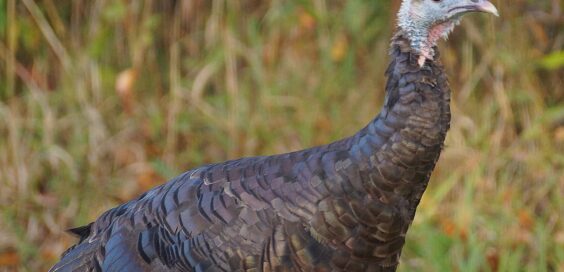
Creature Feature – The Quirky Wild Turkey
Posted by Dustin Horton // November 9, 2020 // Articles, Creature Feature
Thanks to reintroduction programs and better management, wild turkeys recovered from the brink of extinction. Here are a few lesser known facts about these iconic symbols of Thanksgiving.
Male turkeys get aggressive during mating season and have attacked automobiles, mail carriers and their own reflections. Those with longer snoods (droopy, red growths on their beaks) are more desirable to females.
You can tell the gender of a turkey by its poop! Male turkeys have J-shaped droppings, while the females have spiral-shaped droppings.
Mother turkeys only feed their babies (poults) for a few days, after which the young binge on insects. As they mature, they eat more plants including grasses, leaves, fruits, berries and seeds.
A social hierarchy is established among young turkeys and remains in place throughout their lifetime.
Adult wild turkeys have around 5,500 beautiful, iridescent feathers. In the early 1800’s, John James Audubon was inspired to paint a life-size portrait of a wild turkey.
They may look gangly, but wild turkeys are swift, reaching upwards of 15 mph on foot and up to 50 mph on the wing. They roost in trees and can even swim. They also have excellent daytime vision – 3 times better than ours – and see in color.
Be grateful for the quirky wild turkey!
Article & Photo by Margie Manthey













